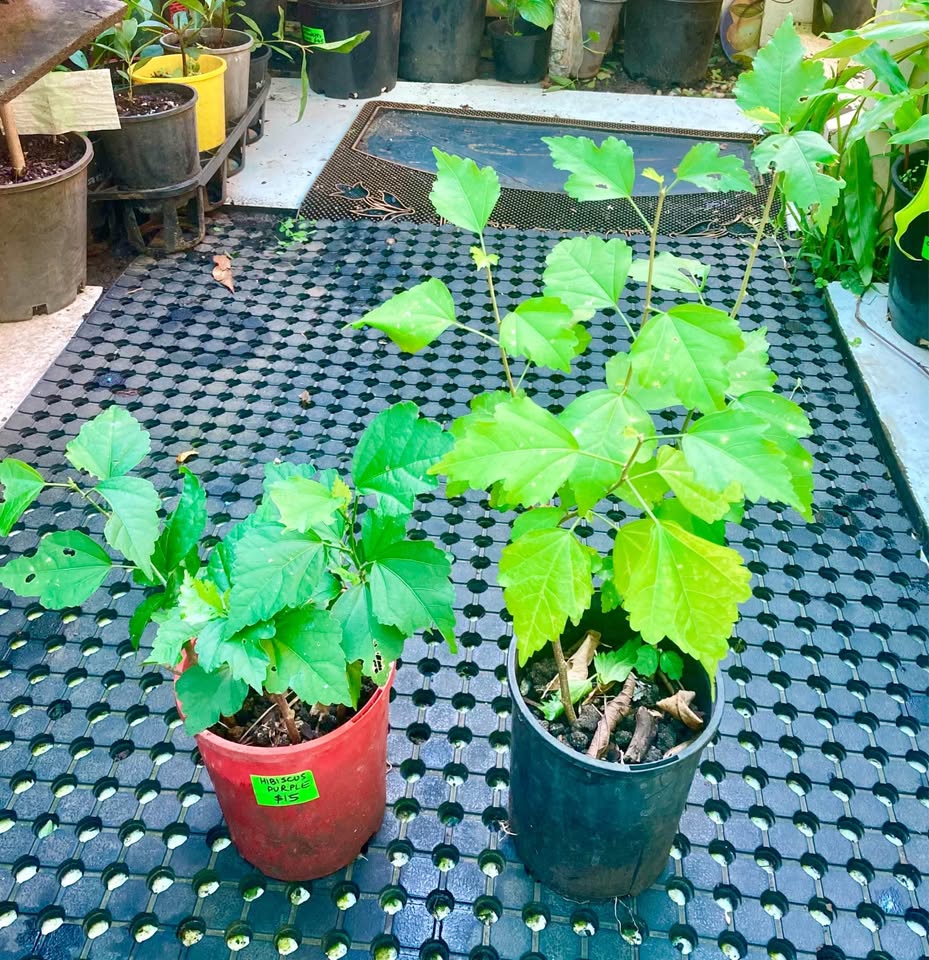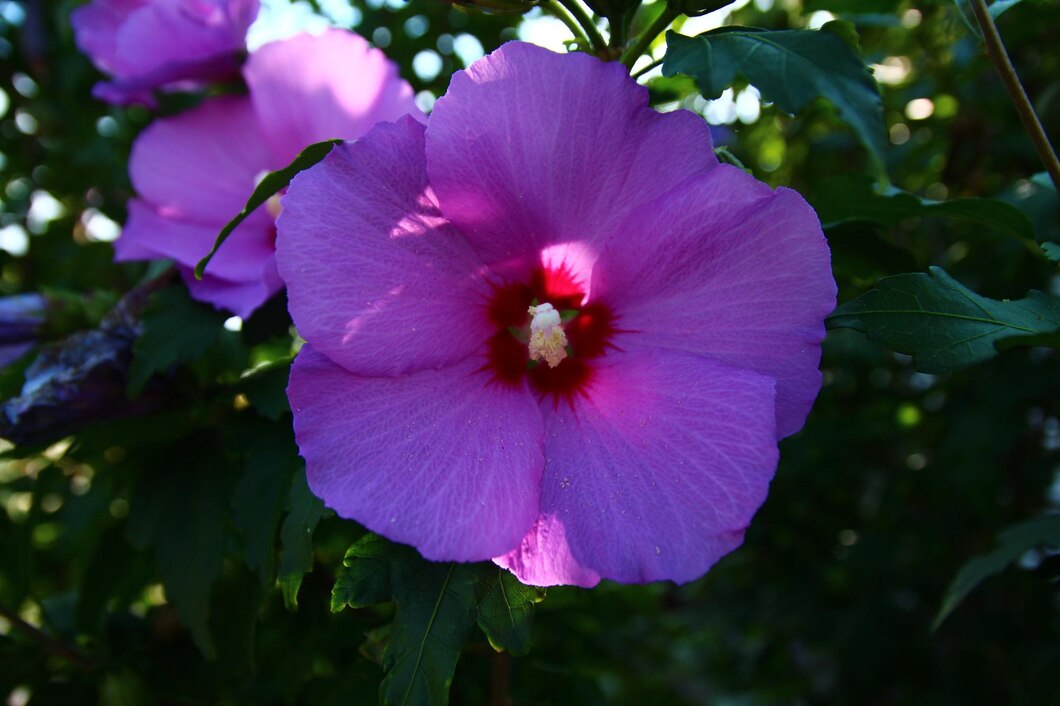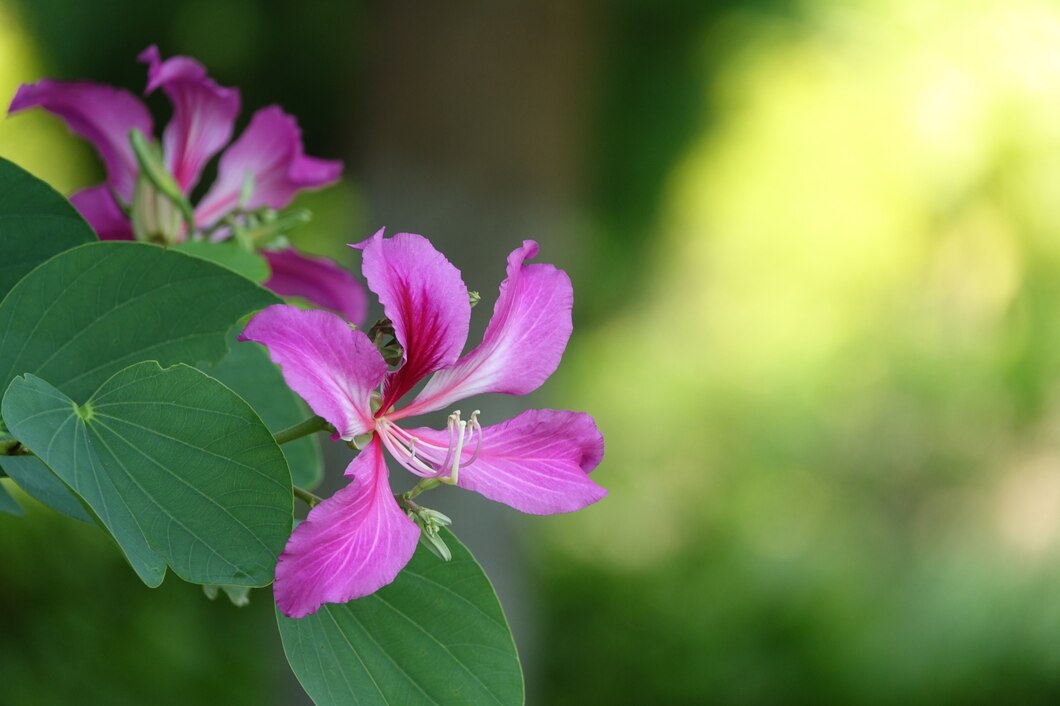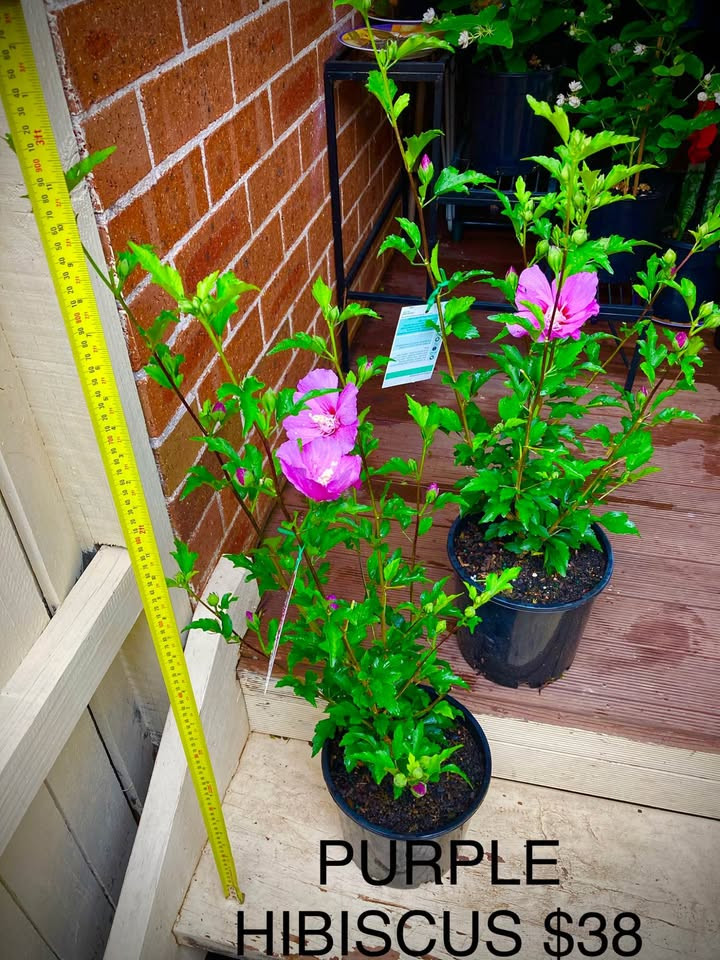A Complete Guide to Growing Hibiscus Purple Plants in Sydney’s Climate
Add a vibrant touch to your garden with the hibiscus purple plant in Sydney. Known for its striking blooms, this tropical beauty thrives in Sydney’s climate, perfect for any garden. Plan your visit to explore more!
If you're looking to add a touch of tropical beauty to your garden, the hibiscus purple plant in Sydney is an ideal choice. Known for its striking, vibrant blooms, this plant thrives in Sydney’s temperate climate, making it a favourite among gardeners. Whether you're a seasoned plant enthusiast or a beginner, this guide will help you grow and care for your hibiscus purple plant with ease.
Choosing the Right Spot for Your Hibiscus Purple Plant in Sydney
When growing a hibiscus purple plant in Sydney, selecting the right location is key to ensuring its vibrant growth and stunning blooms. The perfect spot should mimic the plant's natural tropical environment, allowing it to flourish and thrive in your garden.
1. Sunlight Requirements:
Hibiscus plants, including the purple variety, require plenty of direct sunlight to thrive. In Sydney, aim for at least 6 hours of sunlight per day to encourage healthy growth and an abundance of flowers. Choose a sunny spot where the plant can soak up the sun, but be mindful of extreme afternoon heat, especially in the summer. A location with filtered sunlight in the hotter part of the day may work well, particularly for young plants or in areas that experience intense midday sun.
2. Well-Draining Soil:
Hibiscus purple plants prefer well-draining soil that allows water to flow freely without becoming waterlogged. Heavy, clayey soil can hinder root development, leading to root rot and other issues. Incorporate organic matter or compost into the soil to improve its structure and drainage. If your garden's soil is clay-heavy, consider planting your hibiscus in a raised bed or large pot to ensure optimal drainage.

3. Protection from Strong Winds:
While hibiscus plants are quite hardy, strong winds can damage the delicate flowers and stems. Look for a location that provides some wind protection, such as near a fence, wall, or other structures. This will help safeguard your plant during stormy weather and prevent the flowers from being prematurely knocked off.
4. Space to Grow:
Hibiscus plants, especially the purple variety, can grow quite large, depending on the cultivar. It's essential to leave enough space around the plant to allow for proper air circulation and room for it to spread. This helps reduce the risk of fungal diseases and ensures the plant remains healthy. Ideally, plant your hibiscus at least 1 to 2 meters away from other plants or structures to allow it to reach its full size without overcrowding.
5. Sheltered Microclimate:
Sydney's climate is relatively mild, but it's still important to consider microclimates within your garden. Areas with some natural shelter—such as those near trees or taller shrubs—can provide the perfect balance of warmth and protection. These sheltered areas can help keep your hibiscus safe from unexpected temperature fluctuations and the intense midday heat.
Preparing the Soil for Your Hibiscus Purple Plant in Sydney
Proper soil preparation is a crucial step when planting your hibiscus purple plant in Sydney, as it ensures the plant has the ideal environment to grow, root deeply, and produce vibrant blooms. Here’s how to prepare the soil effectively:
1. Check Soil Drainage:
Hibiscus plants, including the purple variety, thrive in well-drained soil. Standing water can lead to root rot and fungal diseases, so it’s important to ensure your soil has good drainage. To test the drainage, dig a small hole about 30 cm deep and fill it with water. If the water takes more than a few hours to drain, your soil may be too heavy and compact, which could pose problems for your hibiscus. In this case, it’s best to amend the soil or consider planting in raised beds or containers to improve drainage.
2. Loosen the Soil:
Hibiscus plants need room for their roots to spread and grow, so it’s essential to loosen the soil to a depth of at least 30 cm. Use a garden fork, tiller, or shovel to break up compacted soil. If the soil is heavy clay, it can become very dense, making it difficult for roots to penetrate. Loosening the soil will help air reach the roots, promote water drainage, and reduce compaction. If you’re planting in an area with poor soil structure, adding organic matter will also help improve the soil’s texture.
3. Add Organic Matter:
Hibiscus purple plants thrive in slightly acidic to neutral soil with plenty of organic matter. Incorporating compost, well-rotted manure, or peat moss into the soil helps improve its fertility, water retention, and drainage. Organic matter also promotes beneficial microbial activity, which is essential for root health. Aim to add a 3 to 5 cm layer of compost to the top of the soil, then mix it in thoroughly with the garden fork or shovel. This will help create a rich, loose soil structure that will support your hibiscus plant's growth.
4. Adjust Soil ph:
Hibiscus plants prefer slightly acidic to neutral soil, with a pH level between 6.0 and 7.0. If your soil is too alkaline (above 7.0), your hibiscus may struggle to absorb essential nutrients. You can test your soil’s pH with a soil test kit, which can be purchased at most garden centers. If the soil is too alkaline, you can amend it by adding sulfur or composted pine bark to lower the pH. Conversely, if your soil is too acidic, adding lime can help raise the pH to a more suitable level.
5. Consider Mulching:
After preparing the soil and planting your hibiscus purple plant, apply a layer of mulch around the base of the plant. Mulch helps retain moisture, keeps the soil temperature consistent, and suppresses weeds. Organic mulches, such as shredded bark, straw, or grass clippings, work well for hibiscus plants. Make sure to leave a small gap around the stem to prevent moisture from accumulating directly against the plant, which could lead to rot.
6. Fertilize the Soil:
Hibiscus plants are heavy feeders, especially during their growing season. Before planting, you can mix a slow-release balanced fertilizer into the soil to provide essential nutrients. Additionally, you can apply a liquid fertilizer with a higher phosphorus content (to encourage blooming) during the growing season, typically in spring and summer. Be cautious not to over-fertilize, as too much nitrogen can encourage lush green growth at the expense of flowers.

Watering and Fertilizing Your Hibiscus Purple Plant in Sydney
Watering and fertilizing are two of the most important aspects of caring for your hibiscus purple plant in Sydney. Proper hydration and nutrition will ensure your plant thrives, remains healthy, and produces vibrant blooms. Here's a detailed guide to effective watering and fertilizing techniques for your hibiscus purple plant:
Watering Your Hibiscus Purple Plant in Sydney
1. Watering Frequency: Hibiscus plants are relatively thirsty and prefer consistently moist soil, but not soggy. In Sydney’s climate, where temperatures can fluctuate, the frequency of watering depends on the time of year, the size of the plant, and the weather. During the warmer months (spring and summer), your hibiscus will need more frequent watering, possibly every 2–3 days, especially if it's in direct sunlight. In the cooler months (autumn and winter), the watering interval can be extended to once a week, as the plant's growth slows down.
2. Deep Watering: Hibiscus plants prefer deep watering rather than light, frequent watering. This encourages the roots to grow deeper and become more established, which helps the plant survive dry periods. Water the base of the plant thoroughly, allowing the water to soak in deeply. Avoid wetting the leaves, as this can lead to fungal diseases. When watering, ensure that the water reaches at least 30 cm deep in the soil to encourage healthy root development.
3. Check Soil Moisture: Before watering, check the moisture level of the soil by inserting your finger into the soil up to 2–3 cm. If it feels dry, it’s time to water. However, if the soil is still moist, it’s better to wait. Overwatering can cause root rot and other issues, so always ensure the soil has good drainage and doesn’t stay waterlogged. You can also use a moisture meter to monitor soil moisture accurately.
4. Watering During Dry Spells: During periods of prolonged heat or drought, your hibiscus purple plant in Sydney may require more frequent watering. Keep an eye on the weather and adjust your watering schedule accordingly. If you're in a particularly hot area, try watering early in the morning or late in the evening to reduce evaporation and ensure the water reaches the roots before the sun heats up the soil.
Fertilizing Your Hibiscus Purple Plant in Sydney
1. When to Fertilize: Hibiscus plants are heavy feeders, and they benefit from regular feeding, particularly during their active growing season (spring and summer). Apply fertilizer every 4–6 weeks throughout the growing season to support robust growth and abundant blooming. In the fall and winter months, when the plant is dormant or growing slowly, reduce the frequency of fertilization.
2. Choosing the Right Fertilizer: For hibiscus purple plants in Sydney, a balanced fertilizer with equal amounts of nitrogen (N), phosphorus (P), and potassium (K) works well. However, if you’re looking to boost blooms, you can choose a fertilizer with higher phosphorus content. Phosphorus supports flower development, encouraging your hibiscus to produce more vibrant and abundant flowers. Avoid fertilizers with too much nitrogen, as this can lead to excessive leaf growth with fewer flowers.
3. Organic vs. Synthetic Fertilizers: While both organic and synthetic fertilizers can be effective, organic options like compost, aged manure, or seaweed extract are often better for the long-term health of your hibiscus. These organic fertilizers improve soil structure and provide a slow, steady release of nutrients. Synthetic fertilizers, on the other hand, tend to release nutrients more quickly but may need to be applied more frequently.
4. How to Fertilize:
- Granular Fertilizer: If using granular fertilizer, spread it evenly around the base of the plant, taking care not to place it directly on the stem. Gently work it into the soil with a garden fork or rake. Water thoroughly after applying to help the nutrients reach the roots.
- Liquid Fertilizer: Liquid fertilizers are easier to apply and are absorbed more quickly by the plant. Mix the liquid fertilizer according to the instructions on the label, and water your plant as usual, ensuring the fertilizer solution reaches the root zone.
5. Signs of Overfertilizing: Over-fertilizing can harm your hibiscus plant, leading to excessive leaf growth, poor flowering, or burnt leaf edges. If you notice yellowing leaves, stunted growth, or a decrease in flower production, this may be a sign that your plant has received too much fertilizer. In this case, flush the soil with plenty of water to remove excess fertilizer and adjust your fertilizing schedule accordingly.
6. Foliar Feeding: Hibiscus plants can also benefit from foliar feeding, where you apply a diluted liquid fertilizer directly to the leaves. This provides a quick nutrient boost and is especially helpful if your plant is showing signs of nutrient deficiency, such as yellowing leaves or poor growth. Be sure to apply the fertilizer in the early morning or late afternoon to avoid burning the leaves with the midday sun.

Additional Tips for Watering and Fertilizing
- Mulch Around the Base: Applying mulch around the base of your hibiscus purple plant in Sydney helps retain moisture, regulate soil temperature, and reduce the need for frequent watering. Organic mulches like wood chips or bark also decompose over time, adding nutrients to the soil.
- Watering in Containers: If your hibiscus is in a pot or container, ensure it has good drainage and adjust your watering schedule to prevent water from collecting at the bottom. Plants in containers may need more frequent watering since the soil tends to dry out faster.
- Avoid Watering the Leaves: Always water the soil and avoid wetting the leaves of the plant to reduce the risk of fungal infections and other diseases.
Plan Your Visit
If you’re looking for healthy hibiscus purple plants in Sydney to add to your garden, plan your visit to our nursery. We offer a wide range of hibiscus plants, and our knowledgeable staff will be happy to guide you in selecting the best variety for your space. Whether you’re an experienced gardener or just starting out, we’re here to support you in making your garden flourish.
With the right care, your hibiscus purple plant in Sydney will reward you with stunning blooms throughout the growing season. Add this tropical beauty to your landscape and enjoy its vibrant colors for years to come!
